Applied Mathematics
Vol.3 No.12(2012), Article ID:25593,4 pages DOI:10.4236/am.2012.312269
On Basis Properties of Degenerate Exponential System
Non-Harmonic Analysis, Institute of Mathematics and Mechanics of NAS of Azerbaijan, Baku, Azerbaijan
Email: zahira_eng13@hotmail.com
Received September 5, 2012; revised October 10, 2012; accepted October 17, 2012
Keywords: System of Exponents; Degeneration; Basicity; Completeness; Minimality
ABSTRACT
Exponential systems of the form  are considered, where
are considered, where  is a degenerate coefficient,
is a degenerate coefficient,  is a set of all integers and
is a set of all integers and . The basis properties of these systems in
. The basis properties of these systems in , when, generally speaking,
, when, generally speaking, 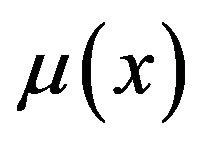 doesn’t satisfy the Muckenhoupt condition are investigated.
doesn’t satisfy the Muckenhoupt condition are investigated.
1. Introduction
Basis properties of classical system of exponents
![]() in Lebesgue spaces
in Lebesgue spaces , are well studied (see e.g. [1-4]). N. K. Bari in her fundamental work [5] raised the issue of the existence of normalized basis in
, are well studied (see e.g. [1-4]). N. K. Bari in her fundamental work [5] raised the issue of the existence of normalized basis in , which is not Riesz basis. The first example of this was given by K. I. Babenko [6]. He proved that the degenerate system of exponents
, which is not Riesz basis. The first example of this was given by K. I. Babenko [6]. He proved that the degenerate system of exponents 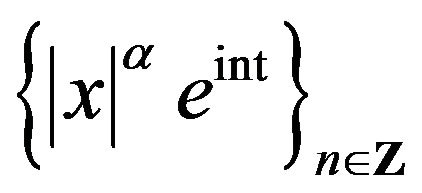
with  forms a basis for
forms a basis for , but is not Riesz basis when
, but is not Riesz basis when . This result has been extended by V. F. Gaposhkin [7]. In [8] the condition on the weight
. This result has been extended by V. F. Gaposhkin [7]. In [8] the condition on the weight  was found, which make the system
was found, which make the system ![]()
form a basis for the weight space 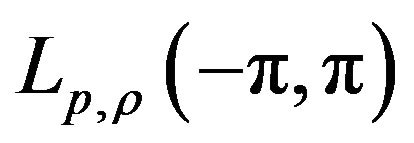 with a norm
with a norm
 .
.
Similar problems are considered in [9-13]. Basis properties of a degenerate system of exponents are closely related to the similar properties of an ordinary system of exponents in corresponding weight space. In all the mentioned works the authors consider the cases, when the weight or the degenerate coefficient satisfies the Muckenhoupt condition (see, for example, [14]).
In this paper the basis properties of exponential systems with a degenerate coefficient are studied in the spaces , when the degenerate coefficient does not satisfy the Muckenhoupt condition. A similar problem was considered earlier in [15].
, when the degenerate coefficient does not satisfy the Muckenhoupt condition. A similar problem was considered earlier in [15].
2. Completeness and Minimality
We consider a system of exponents
![]() , (1)
, (1)
with a degenerate coefficient
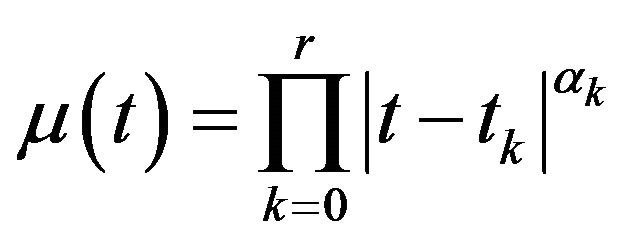 where
where , are different points.
, are different points.
It is clear that , if and only if
, if and only if . Assume that the function
. Assume that the function
 cancels the system
cancels the system  out, that is
out, that is
 , (2)
, (2)
where  is a complex conjugate. It is clear that
is a complex conjugate. It is clear that , where
, where . Then, it follows directly from (2) that
. Then, it follows directly from (2) that  a.e. on
a.e. on  and, consequently,
and, consequently,  a.e. on
a.e. on . Thus, if
. Thus, if

then system  is complete in
is complete in
 .
.
Now consider the minimality of system  in
in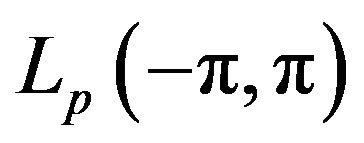 . If
. If
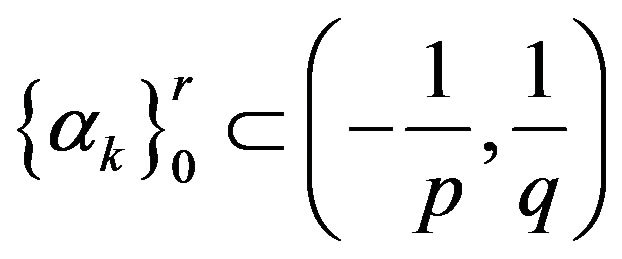 then it is minimal in
then it is minimal in 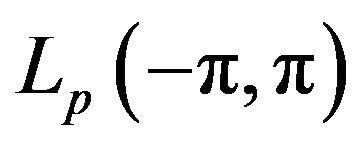 and system
and system
 is biorthogonal to it. So in this case
is biorthogonal to it. So in this case
 . Let
. Let . Consider the system
. Consider the system
 . (3)
. (3)
We have
 (4)
(4)
It is clear that in the neighborhood of zero it holds
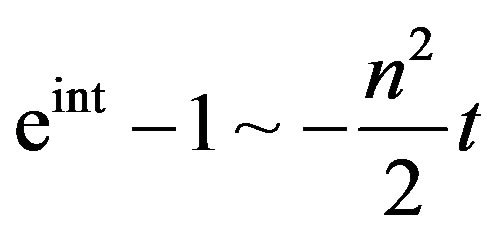 .
.
Consequently, the following representation
 on
on  is true.
is true.
From this representation directly follows that if
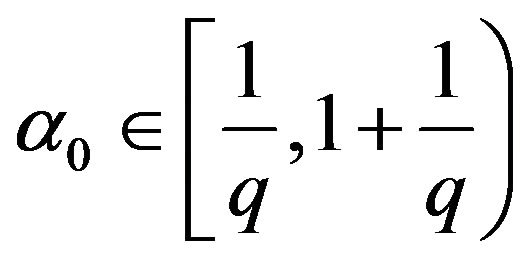
then the system (3) belongs to the space . Then from the relation (4) we obtain that the system
. Then from the relation (4) we obtain that the system  is minimal in
is minimal in .
.
Consider the completeness of system
![]() , (5)
, (5)
in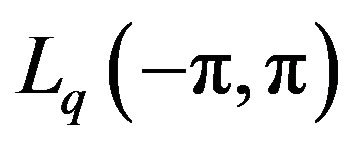 . Let for some function
. Let for some function  we have
we have
 .
.
Since , then from this relation follows that
, then from this relation follows that
 where
where ![]() is some constant. It is clear that
is some constant. It is clear that
 so
so . Consequently,
. Consequently,  , hence
, hence . As a result we obtain that under the following conditions
. As a result we obtain that under the following conditions
 , (6)
, (6)
system (5) is complete and minimal in . Thus, the system (1) is complete, but it is not minimal in
. Thus, the system (1) is complete, but it is not minimal in .
.
Consider the basicity of system (5) in . If the conditions
. If the conditions
 satisfies, then it is known that (see. e.g. [9-13]) system (1) forms basis for
satisfies, then it is known that (see. e.g. [9-13]) system (1) forms basis for , and in the case
, and in the case  it is complete and minimal in
it is complete and minimal in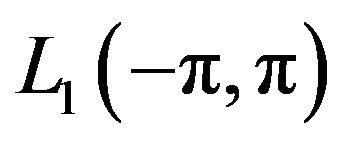 . Then it is clear that system (5) is minimal, but is not complete in
. Then it is clear that system (5) is minimal, but is not complete in .
.
Now, let the condition (6) holds. It is easy to see that the system
 is biorthogonal to the system (5) in
is biorthogonal to the system (5) in . Let us show that in this case the system (5) does not form a basis for
. Let us show that in this case the system (5) does not form a basis for . Let it forms a basis for
. Let it forms a basis for .
.
At first consider the case . Then it is known that (see e.g. [16]) should fulfilled the following conditions
. Then it is known that (see e.g. [16]) should fulfilled the following conditions
 where
where  is an arbitrary norm for
is an arbitrary norm for . We have
. We have
 .
.
Regarding biorthogonal system we get the following condition
 . (7)
. (7)
So

where  is a constant depending only on
is a constant depending only on ![]() ( in sequel also). Choose
( in sequel also). Choose  as small as the interval
as small as the interval 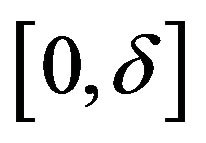 does not contain the points
does not contain the points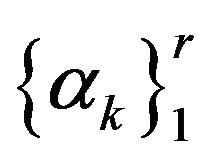 . Then it is absolutely clear that
. Then it is absolutely clear that :
:
 .
.
Consequently

It is clear that for sufficiently great ![]() we have
we have . Thus
. Thus

so . And it contradict the condition (7).
. And it contradict the condition (7).
Consider the case . In the absolutely same way as in the previous case, we get
. In the absolutely same way as in the previous case, we get
 .
.
Hence it directly follows that

 .
.
Consider the case . We have
. We have
 .
.
Let . Take
. Take . Consequently
. Consequently
 .
.
In the sequel we should pay attention to the following identities

From these relations and from the fact that the product of cosines expressed in terms of cosines, it directly follows
![]() where
where 
 , are some constants. It is easy to see that
, are some constants. It is easy to see that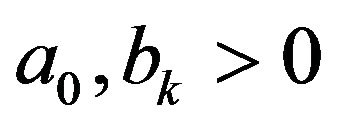 . Taking into account the expressions above we have
. Taking into account the expressions above we have
 .
.
It is clear that integrals  converge. Then from the previous inequality follows that
converge. Then from the previous inequality follows that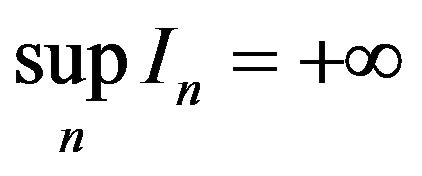 . Thus, the following theorem is true.
. Thus, the following theorem is true.
Theorem 1. Let the following condition be satisfied
 .
.
Then the system  forms a basis for
forms a basis for . If the relation (6) holds, then this system is complete, but is not minimal in
. If the relation (6) holds, then this system is complete, but is not minimal in 
 . In this case system (5) is complete and minimal in
. In this case system (5) is complete and minimal in  but does not form a basis for it.
but does not form a basis for it.
The following theorem is also true.
Theorem 2. Let the conditions
![]() , (8)
, (8)
be satisfied. Then the system  is complete and minimal in
is complete and minimal in , but does not form a basis in it. If the conditions
, but does not form a basis in it. If the conditions
 , (9)
, (9)
hold, then system (5) is complete and minimal in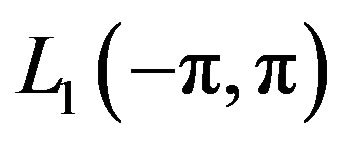 , but does not form a basis for it.
, but does not form a basis for it.
Proof. If the conditions (8) holds then the system  is complete and minimal in
is complete and minimal in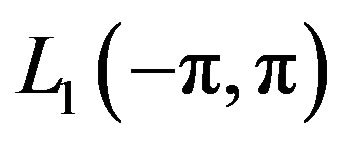 . Indeed, it is clear that
. Indeed, it is clear that
 .
.
Consequently, the system  forms a basis for
forms a basis for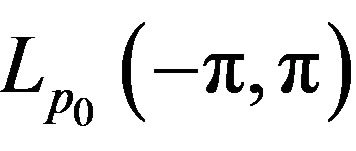 , and as a result it is complete in
, and as a result it is complete in .
.
 is a biorthogonal system to
is a biorthogonal system to .
.
It is clear that the system 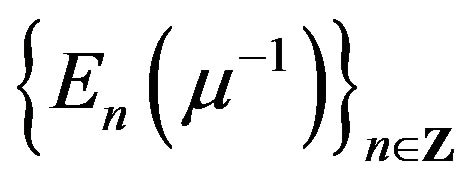 belongs to
belongs to
 , and consequently, it is minimal in
, and consequently, it is minimal in
 . So the singular operator with the Hilbert kernel is not bounded in
. So the singular operator with the Hilbert kernel is not bounded in , then as a result it follows that this system does not form a basis for
, then as a result it follows that this system does not form a basis for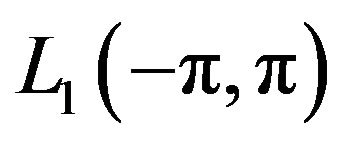 . If the conditions (9) hold then in the absolutely same way as in the previous case we establish that the system (5) is complete and minimal in
. If the conditions (9) hold then in the absolutely same way as in the previous case we establish that the system (5) is complete and minimal in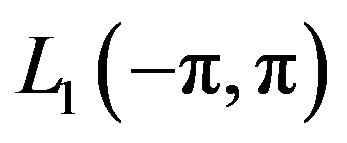 , but does not form a basis for it. Consequently, the system
, but does not form a basis for it. Consequently, the system
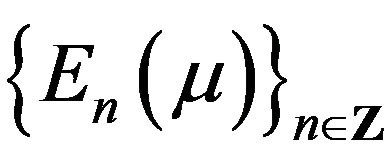 is complete, but is not minimal in
is complete, but is not minimal in and has a defect equal to 1.
and has a defect equal to 1.
The theorem is proved.
3. Acknowledgements
The authors are thankful to the referees for their valuable comments.
REFERENCES
- A. Zigmund, “Trigonometric Series,” Vol. 1, Mir, Moscow, 1965.
- A. Zigmund, “Trigonometric Series,” Vol. 2, Mir, Moscow, 1965.
- R. Edwards, “Fourier Series in a Modern Exposition,” Vol. 1, Mir, Moscow, 1985.
- R. Edwards, “Fourier Series in a Modern Exposition,” Vol. 2, Mir, Moscow, 1985.
- N. K. Bari, “Biorthogonal Systems and Bases in Hilbert Space,” Mathematics, Vol. 148, No. 4, 1951, pp. 69-107.
- K. I. Babenko, “On Conjugated Functions,” DAN SSSR, Vol. 62, No. 2, 1948, pp. 157-160.
- V. F. Gaposhkin, “One Generalization of M. Riesz Theorem on Conjugated Functions,” Matematicheskii Sbornik, Vol. 46, No. 3, 1958, pp. 111-115.
- K. S. Kazaryan and P. I. Lizorkin, “Multipliers, Bases and Unconditional Bases in the Weighted Spaces B and SB,” Proceedings of the Steklov Institute of Mathematics, Vol. 187, 1989, pp. 111-130.
- E. I. Moiseev, “On Basicity of Systems of Cosines and Sines in Weight Space,” Differential Equations, Vol. 34, No. 1, 1998, pp. 40-44.
- E. I. Moiseev, “The Basicity in the Weight Space of a System of Eigen Functions of a Differential Operator,” Differential Equations, Vol. 35, No. 2, 1999, pp. 200-205.
- B. T. Bilalov and S. G. Veliyev, “On Completeness of Exponent System with Complex Coefficients in Weight Spaces,” Transactions of the NAS of Azerbaijan, Vol. 25, No. 7, 2005, pp. 9-14.
- B. T. Bilalov and S. G. Veliyev, “Bases of Eigen Functions of Two Discontinuous Differential Operators,” Differential Equations, Vol. 42, No. 9, 2006, pp. 190-192.
- S. S. Pukhov and A. M. Sedletskii, “Bases of Exponents, Sines and Cosines in Weight Spaces on Finite Interval,” Doklady Akademii nauk. Rossijskaâ akademiâ nauk, Vol. 425, No. 4, 2009, pp. 452-455.
- J. Garnett, “Bounded Analytic Functions,” Mir, Moscow, 1984.
- E. S. Golubeva, “The System of Weighted Exponentials with Power Weights,” Natural Sciences, Vol. 83, No. 2, 2011, pp. 15-25.
- M. G. Krein, “Functional Analysis,” Nauka, Moscow, 1972.

